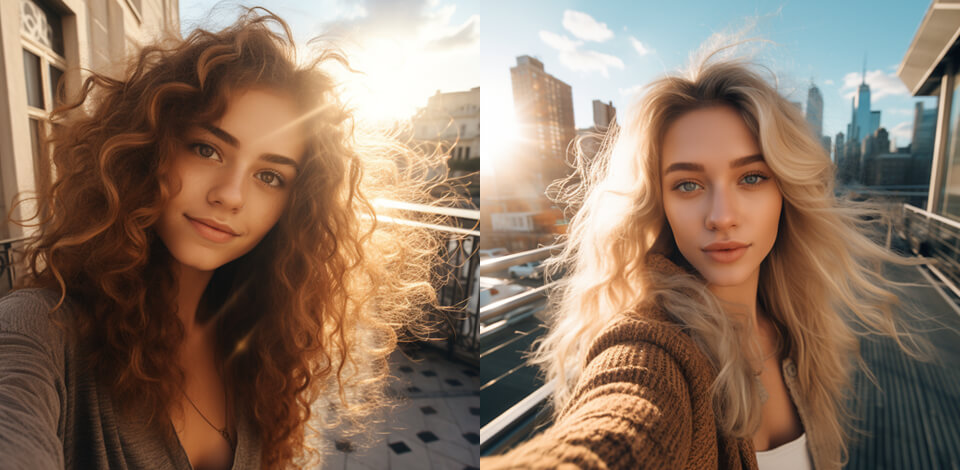
Self-portrait genre is characterized by specific poses and gestures. If you want to take a professional and qualitative selfie, you should opt for a high-resolution sensor and a wide-angle lens. These features allow you to capture more of your surroundings and ensure that your selfies are sharp and detailed.
If you're just starting out, a smartphone with a good front camera and a vibrant screen might be the perfect choice. They offer a variety of features like autofocus and facial recognition software to enhance your selfie-taking experience.
For those looking for a more professional approach, DSLR or mirrorless cameras are the way to go. The best cameras for selfi have larger image sensors and can produce high-quality images. They often come with advanced features like dedicated autofocus systems and high-resolution electronic viewfinders, giving you more control over your selfies.









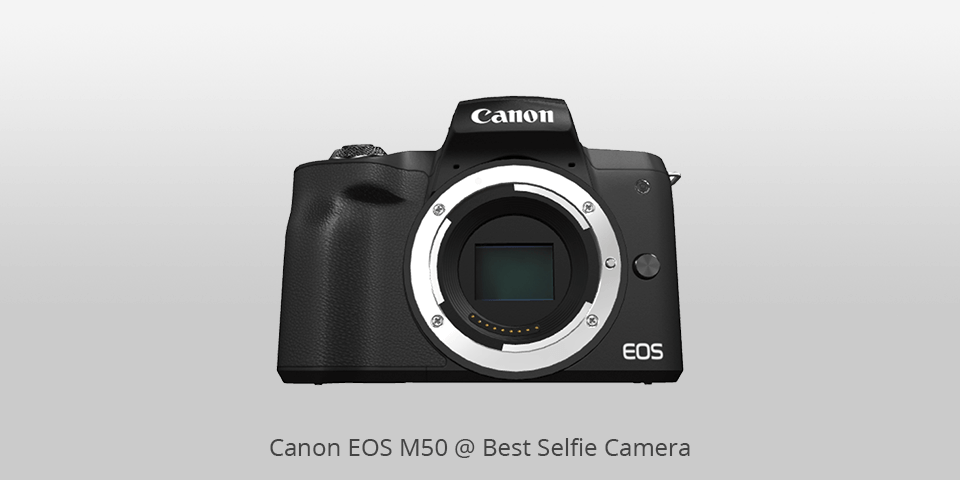
Type: Mirrorless | Sensor: 24 Megapixel APS-C sensor | Resolution: 24MP
Canon EOS M50 is a mid-range mirrorless camera with a 24 Megapixel APS-C sensor, which means it can capture perfect camera selfie. It also has the ability to shoot 4K video, which is a great feature for those looking to capture professional-looking footage. The camera has a new DIGIC 8 processor, which makes it more responsive and improves image quality for both stills and video.
One key improvement is the Eye Detection AF feature, which automatically selects a focus point on the subject's eyes, which is convenient while taking selfies. This is especially useful when using wide lenses or shooting with a shallow depth of field. The camera also has touch-and-drag AF functionality, allowing you to move the autofocus area around the screen while using the viewfinder.
Photo taken with Canon EOS M50
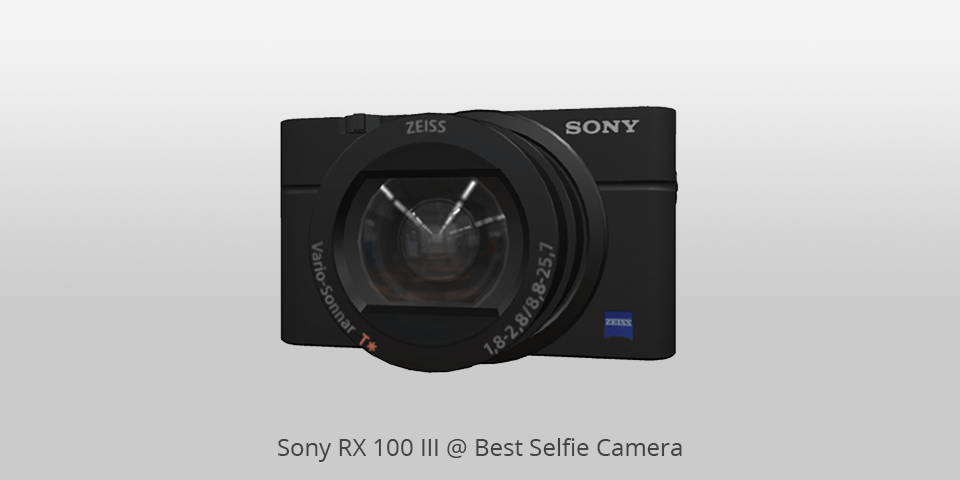
Type: Mirrorless | Sensor: 209 MP 1"-type Exmor R CMOS sensor | Resolution: 20.1MP
Although it is not the newest camera from Sony, it is one of the best cameras for selfi showing great results. 20.1MP image quality, electronic viewfinder, bright ZEISS lens, and portability make RX100 III one of the best devices for professional shooters as well as a good vlogging camera. This camera with a movable screen allows tilting screen upwards over a 180-degree angle.
It has a resolution of 1,228k dots which may compete with more recent models. There is also a face detection technology. Before the self portrait photo is taken, the camera gives you a three-second delay to concentrate on the shot so you won’t spoil the picture trying to control the settings.
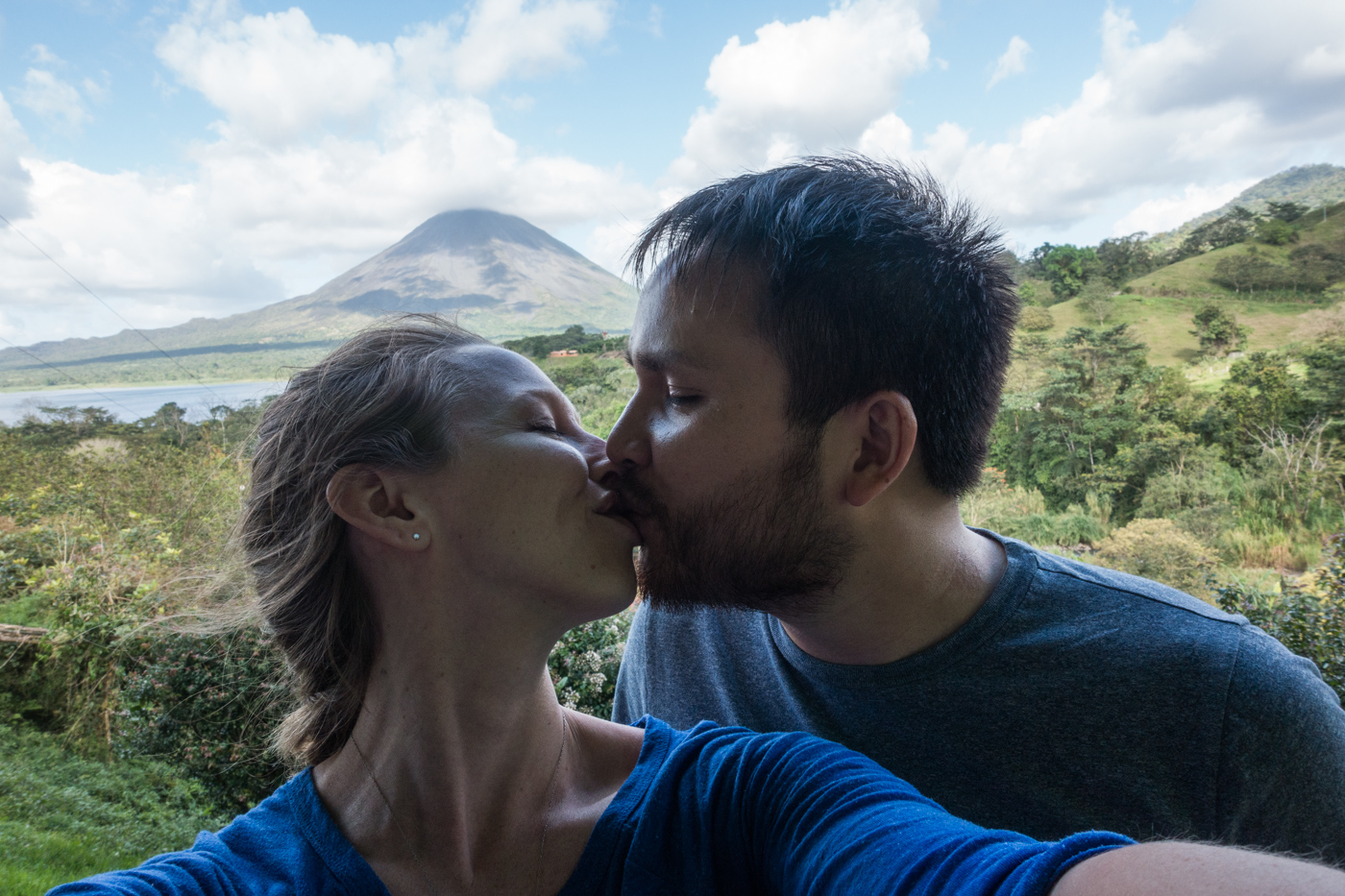
Photo taken with Sony RX 100 III
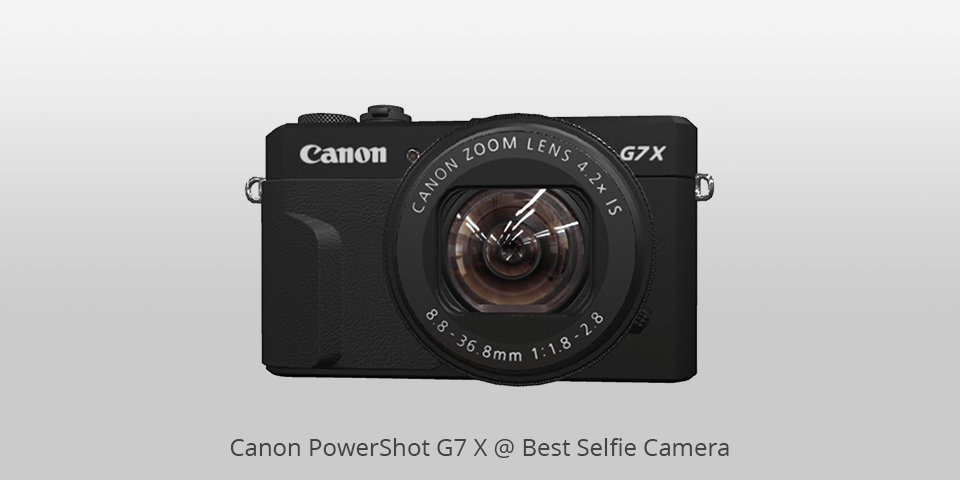
Type: Point and shoot | Sensor: 1-inch sensor | Resolution: 20.2MP
Canon PowerShot G7 X is a point and shoot camera under $500 for selfies which has a universal high-aperture lens and a new image editing processor. If you are looking for a portable device boasting of great picture quality, I recommend this Canon camera. Although it is rather cheap.
It is bigger than a smartphone camera and provides better blurring. Moreover, it is appropriate for shootings in poor light. It is really pleasant to use the 3″ touch screen which provides excellent focusing. You can shoot sharp images and smooth videos thanks to the smart optical image stabilizer.

Photo taken with Canon PowerShot G7 X
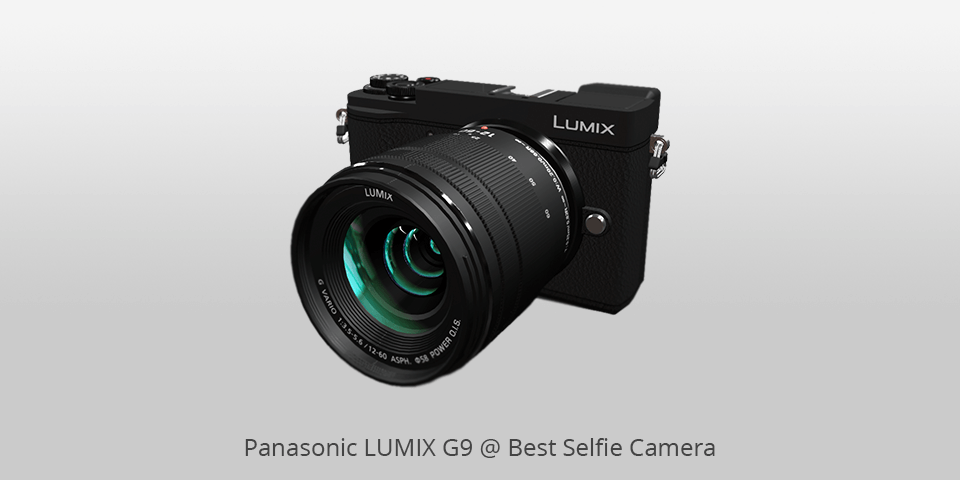
Type: Point and shoot | Sensor: 1-inch sensor | Resolution: 20.2MP
You will have to pay quite a high price for this selfie camera. Actually, it is one of the most well-balanced Micro Four Thirds models these days. Panasonic Lumix G9 has great burst speeds, nice 4K and very reliable AF.
Additionally, this camera for portraits features good image stabilization and fantastic picture quality. All these options are placed in a compact, moisture repellent body. Choose this model of Panasonic camera if you want to get brilliant images and eye-catching selfies.

Photo taken with Panasonic LUMIX G9
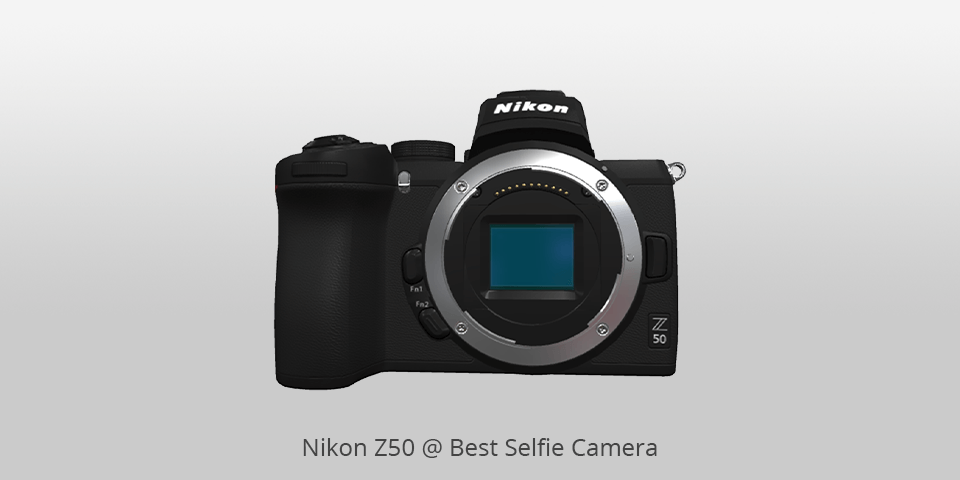
Type: Mirrorless | Sensor: 20.9-megapixel image sensor | Resolution: 21.5MP
Nikon Z50 selfie camera’s front-facing LCD screen is a game-changer for vloggers and selfie enthusiasts. Being able to flip down the screen and see yourself while framing your shot is incredibly useful. It's also great for monitoring your shots while recording videos. It uses phase detection, which ensures accurate and reliable focusing, even in low-light conditions.
This Nikon photography camera boasts a large 3.2-inch touchscreen display with excellent resolution, making it easy to navigate menus and settings. Additionally, Nikon has included both a touchscreen electronic viewfinder (EVF) and a traditional optical viewfinder. Both provide clear and sharp images, giving you options depending on your shooting preferences.
Photo taken with Nikon Z50
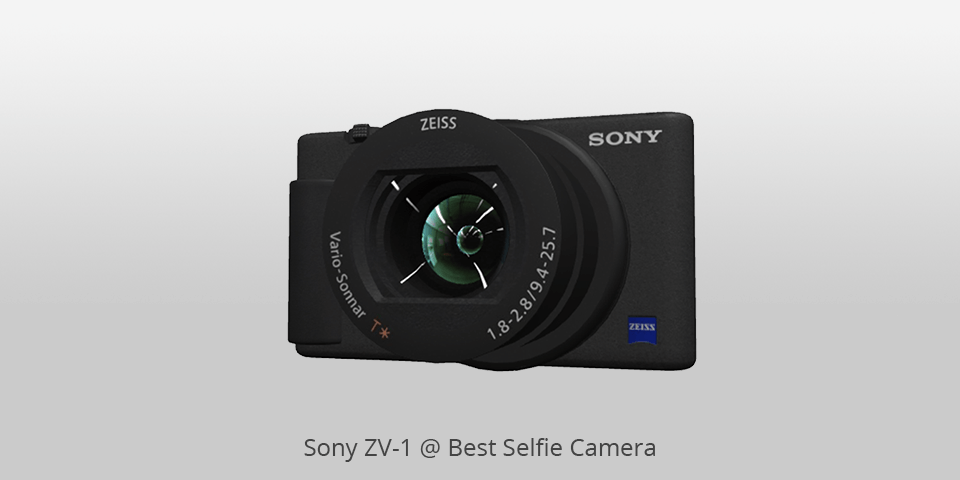
Type: Mirrorless | Sensor: 20.9-megapixel image sensor | Resolution: 21.5MP
One of the standout features of Canon Sony ZV-1 is the side flip-out screen, which makes it super easy to operate with just one hand. Plus, the large video recording button ensures you won't miss any crucial moments. The user interface is also intuitive, with a quick menu for easy access to common settings.
Another advantage is the Fast Hybrid AF, which uses 315 phase-detection focusing points to track fast-moving subjects. This comes in handy when you're on the go and need to capture action-packed shots.
Additionally, the 'Product Showcase' mode is a unique feature that allows you to switch focus from your face to a product you're presenting, adding versatility to your videos which makes it a good camera for Instagram.

Photo taken with Sony ZV-1
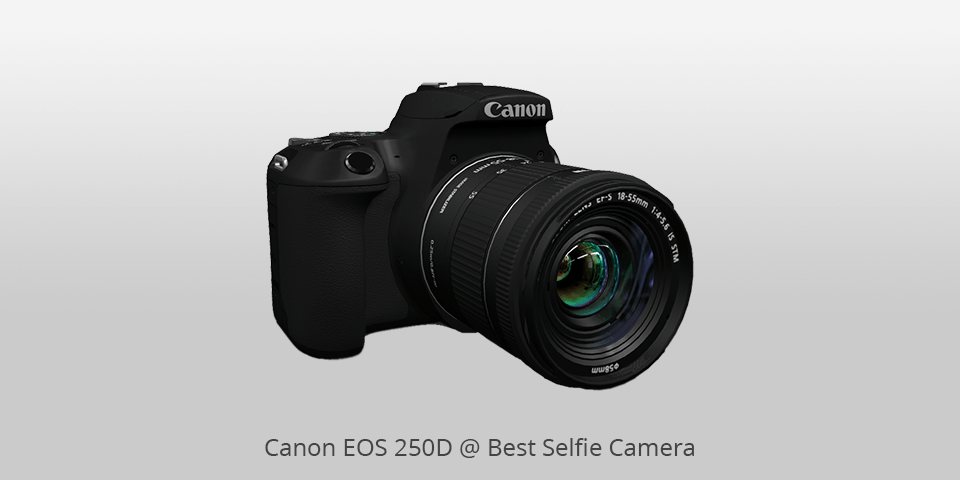
Type: Mirrorless | Sensor: 1.0-type Exmor RS CMOS sensor | Resolution: 21.5MP
Canon EOS 250D selfie camera offers DSLR quality in a compact body, making it a great option for casual photographers. It boasts a 24.1 Megapixel APS-C sensor, which delivers excellent image quality. The Dual Pixel CMOS AF technology ensures sharp focus, which is particularly useful for family shots and vlogs.
One of the standout features of this compact camera is its articulating LCD screen. This screen can be pulled out and tilted upwards or downwards, making it perfect for shooting selfies or vlogs at different angles. It's also a good size, measuring 3.0 inches and offering a resolution of 1,040,000 dots.
Additionally, the camera has a wide range of scene modes and creative filters, allowing users to experiment and enhance their images.
Photo taken with Canon EOS 250D
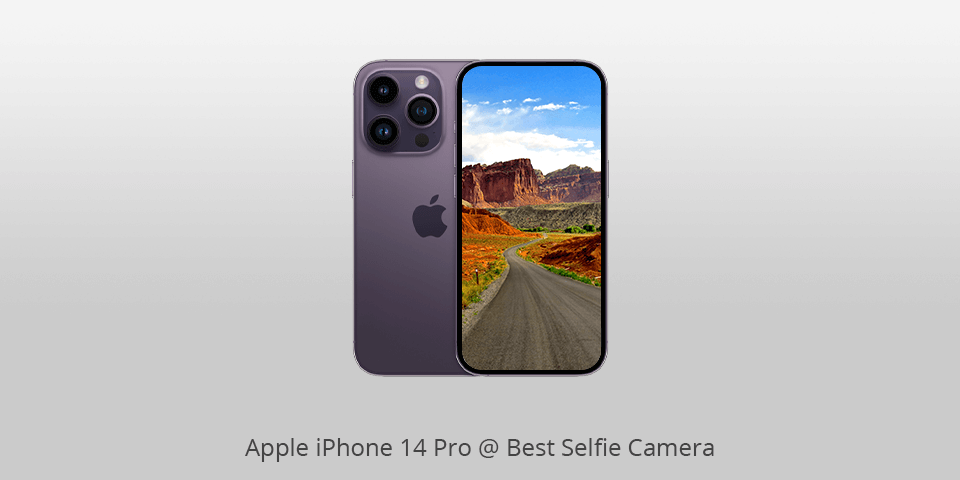
Type: Phone camera | Sensor: 48MP 1/1.28" sensor | Resolution: 48MP
One of the standout advantages of the iPhone 14 Pro's selfie camera is its larger sensor and wider lens field of view compared to camera phones. This allows for a shallower depth of field, creating that desirable bokeh effect where the subject is sharply focused while the background is beautifully blurred.
Additionally, the larger sensor improves the overall image quality by enhancing light sensitivity, resulting in better low-light selfies. Furthermore, the iPhone 14 Pro's selfie camera offers manual focus mode, giving users more control over their final image. The inclusion of second-generation optical image stabilization is another significant advantage which helps minimize shake and blur when capturing selfies.
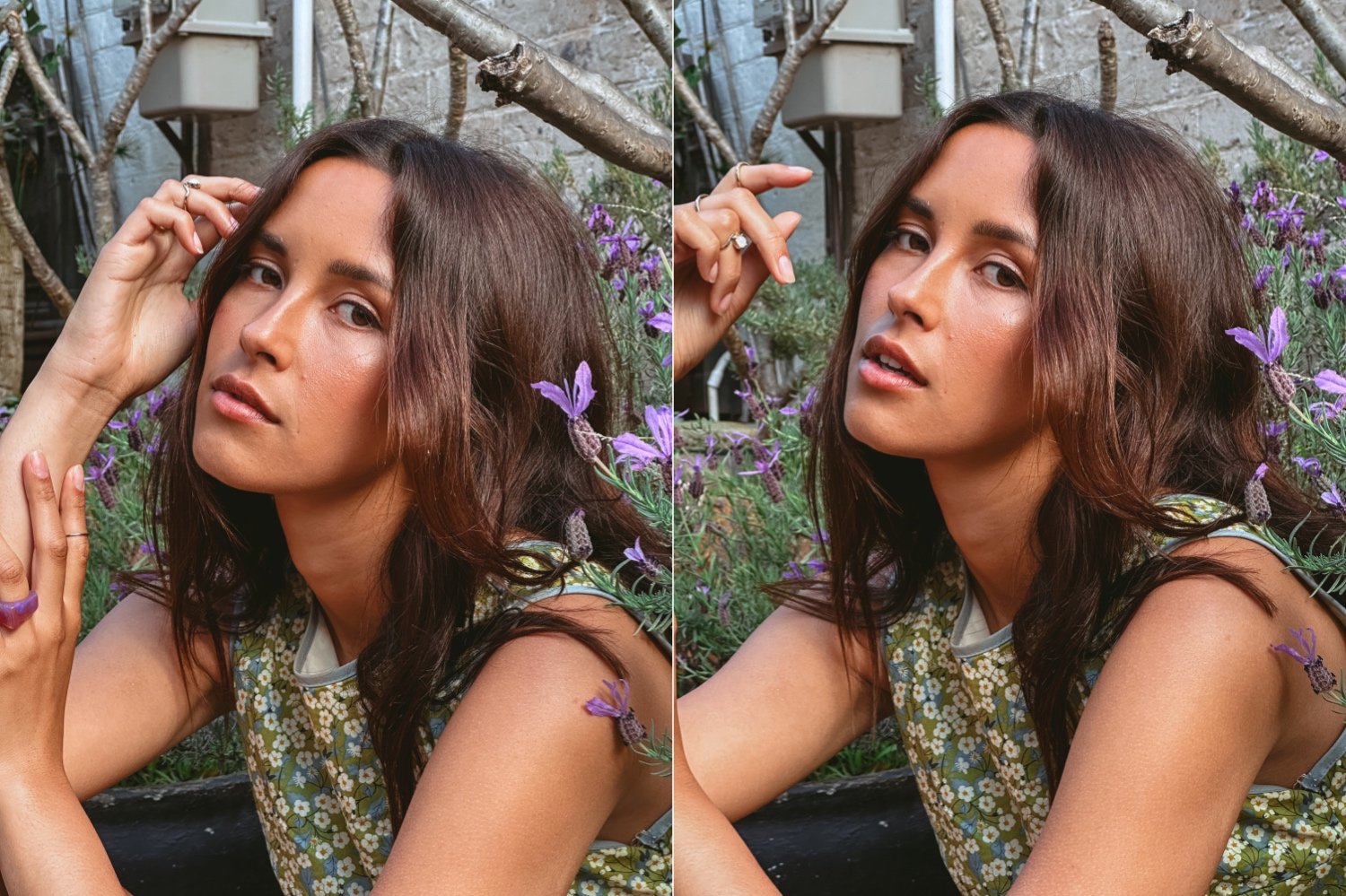
Photo taken with iPhone 14 Pro
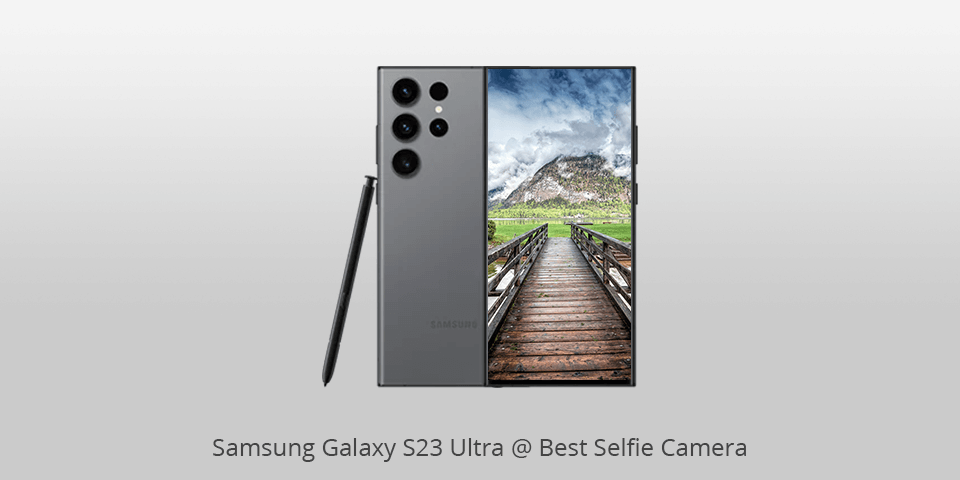
Type: Phone camera | Sensor: ISOCELL HP2 | Resolution: 12MP
The camera on the Galaxy S23 Ultra is quite impressive, allowing you to capture viral 0.5 selfies. With its 12MP sensor and dual pixel autofocus, it promises to enhance the quality of your selfies. Even in low-light conditions, this camera can capture remarkable pictures, allowing you to shine even in the darkest of environments.
Galaxy S23 Ultra's selfie camera boasts a new super-wide lens, which allows you to capture expansive group selfie shots or breathtaking landscapes. The wide-angle lens also enhances image quality when zooming, ensuring every detail is captured with clarity. Additionally, the night portrait feature adds a soft, blurred background, creating a more artistic touch to your selfies.
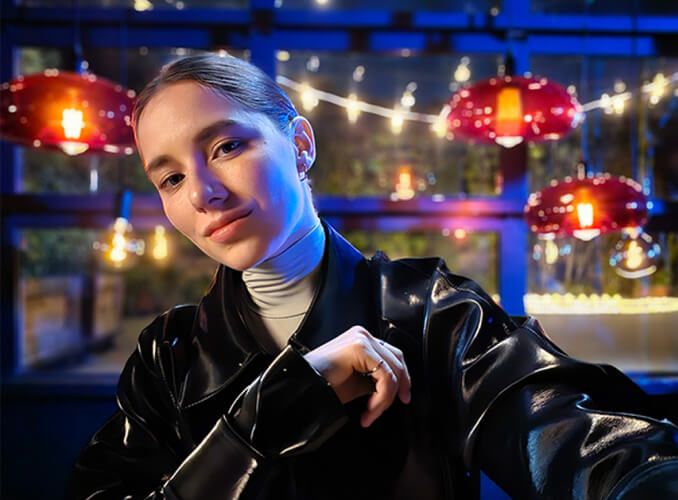
Photo taken with Samsung Galaxy S23 Ultra
Type: Phone camera | Sensor: 1/1.31", Samsung GN1 (ISOCELL Plus CMOS) | Resolution: 50MP
Google Pixel 7 Pro is among the best selfie cameras captures beautiful colors and incredible detail in all lighting conditions, delivering stunning results. offers a portrait mode with various blurring effects, providing more options for creative and natural-looking photos. Besides, this professional camera features a selfie flash that reaches up to three feet away.
One of the notable improvements is the camera's ability to capture detailed and less noisy images in low light. While it may not match the quality of Apple or Samsung phones in this aspect, it has certainly come closer than before.
Pixel 7 Pro excels in zooming capabilities, allowing you to zoom in on objects without losing image quality. This is done by cropping the image, eliminating the need to switch cameras like some other devices.
Photo taken with Google Pixel 7 Pro
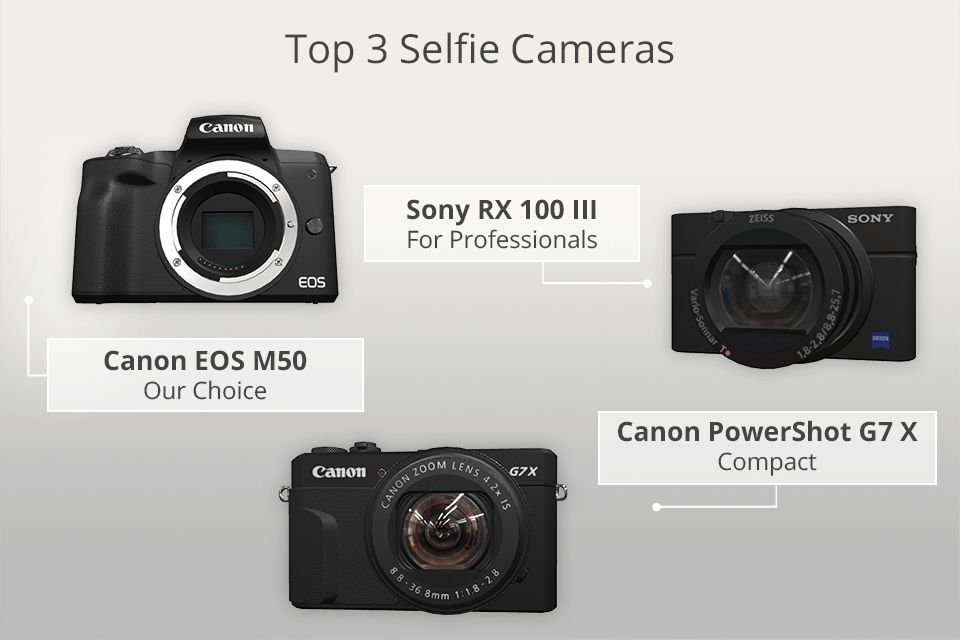
There are some essential parameters in any camera brand which you need to consider for perfect camera selfies.
Sensor. A high-resolution sensor is key to capturing sharp and crisp selfies even if you choose cheap camera. Avoid lower resolution sensors, as they can result in pixelated and blurry pictures. Look for a camera with a large aperture as well, as it allows more light in, enhancing your low-light photography skills.
Lens. The best camera for selfi’s lens should capture attractive portraits with excellent detail and sharpness. It's essential to have a wide-angle lens that can capture more of the background and scenery, adding depth to your selfies.
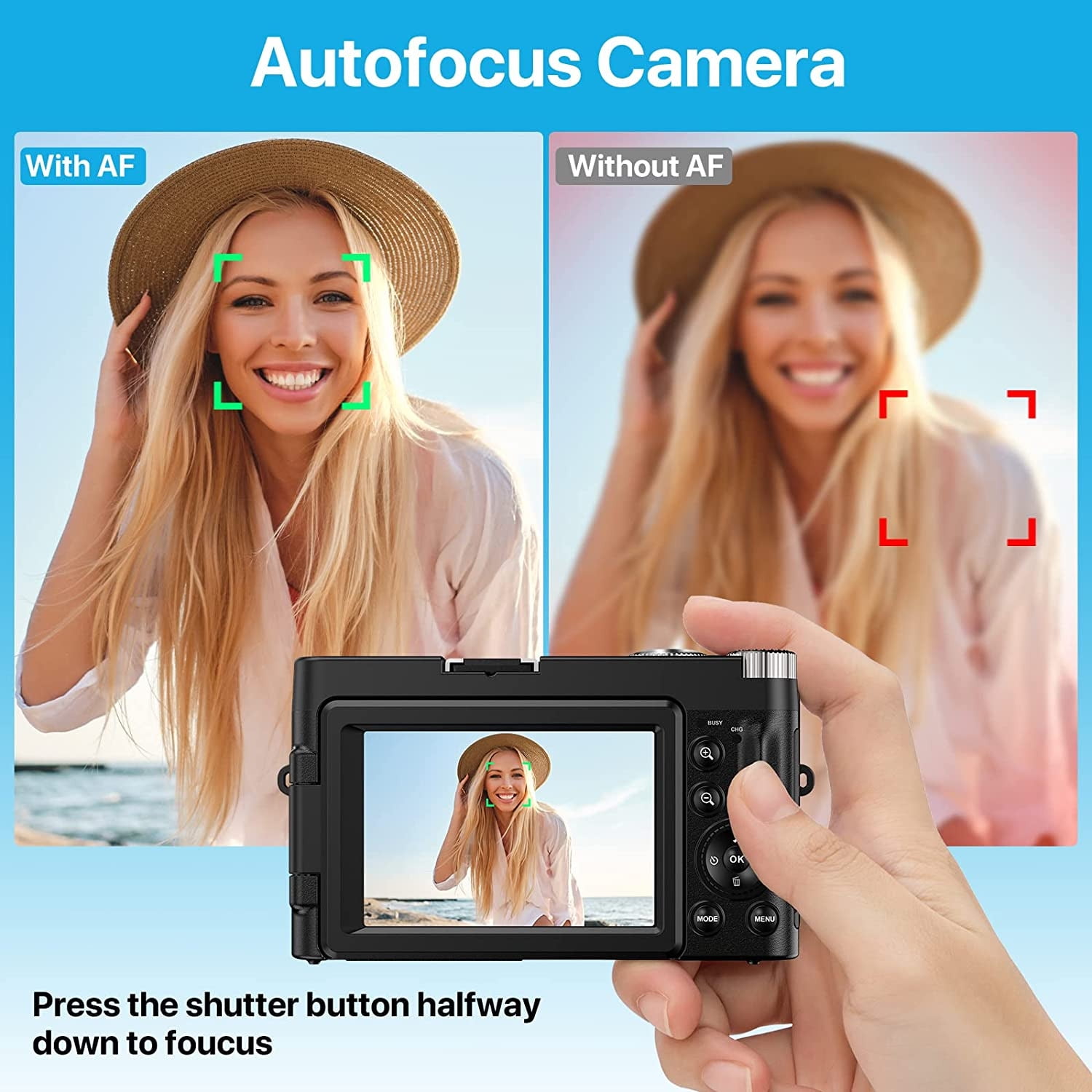
Autofocus. You want it to be fast and accurate, so it can quickly and correctly lock onto your face. Alongside the sensor, the lens plays a significant role in capturing clear pictures and perfect cameras for selfies. Some smartphones offer wide-angle lenses, which are excellent for including more of your surroundings in the shot.
Others provide zoom lenses for a closer look at subjects. You can even find digital cameras under $200 with dual-camera setups or interchangeable lenses, giving you more options for creating stunning selfies.
Electronic viewfinder. This nifty feature lets you preview the image before you snap it, helping you frame the shot perfectly or check for any imperfections. Having an electronic viewfinder becomes even more valuable if you plan to use the camera for other purposes like traveling or hiking.
A larger display will allow you to see your surroundings clearly and avoid any unexpected surprises while capturing those amazing shots.
Processor. A powerful processor ensures that your camera operates smoothly and efficiently. This not only makes it easier to use the camera's features but also guarantees the best possible image quality. So, keep an eye out for selfie cameras with robust processors, like the Motorola Edge 30 Ultra and the Vivo V23 Pro 5G.
Resolution. Consider a selfie camera with a higher resolution, as it captures more detail and leads to better-quality photos. Remember, resolution is just one factor, but it can make a noticeable difference in your selfie game.

Additional features. Facial recognition technology helps you take the perfect selfie effortlessly. Image stabilization ensures your videos and photos stay clear and steady, even if your hands shake. Look out for software enhancements that make your selfies look more appealing.
When exploring selfie cameras, focus on front-facing lens quality, image stabilization, beauty modes, and wide-angle options to accommodate varying compositions and settings. A flip-screen or tilting display is also invaluable for framing your shots with precision.
Experiment with different angles, lighting, and backgrounds to add creativity and depth to your selfies. Incorporate interesting elements, like reflections or unique perspectives, to infuse your self-portraits with character and storytelling.
Absolutely! Selfie cameras are fantastic companions for travel photography, allowing you to capture breathtaking landscapes while including yourself in the frame. Their compact size, ease of use, and creative features make them perfect for documenting your adventures.